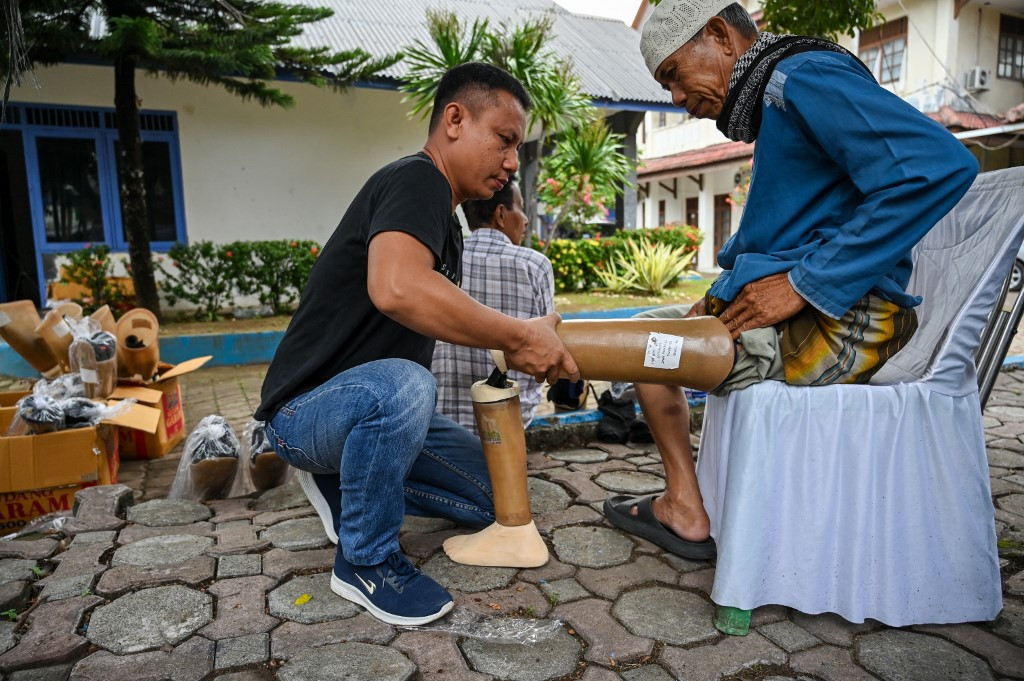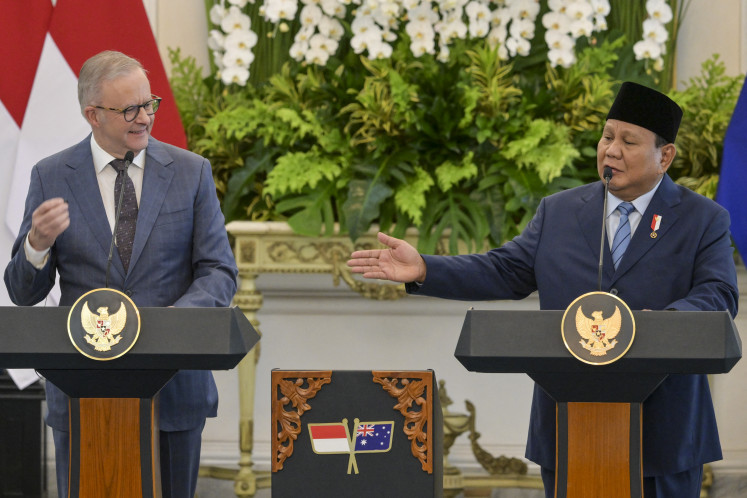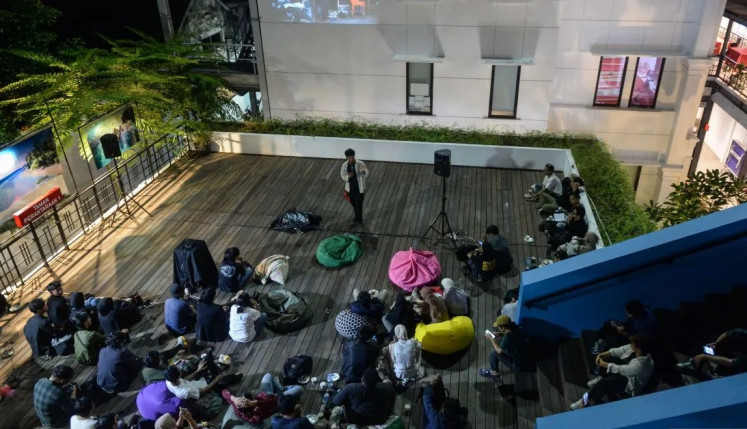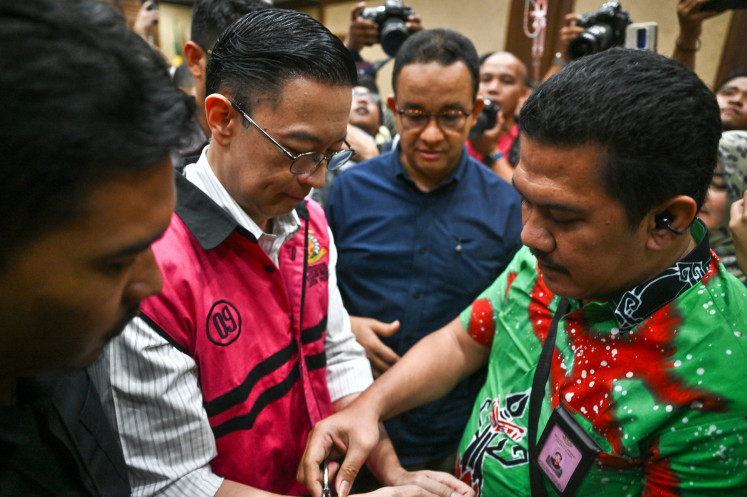Popular Reads
Top Results
Can't find what you're looking for?
View all search resultsPopular Reads
Top Results
Can't find what you're looking for?
View all search resultsHow can inclusion work if it leaves people out?
With the rise of digital financial services, people with disabilities face challenges and gaps when they attempt to access financial products.
Change text size
Gift Premium Articles
to Anyone
A
larmingly, only 22 percent of people with disabilities (PwD), the elderly and vulnerable groups in Indonesia have bank accounts, as per 2022 data from the Financial Services Authority (OJK). This points to a vast chasm that lies in contrast to Indonesia’s Medium-Term Development Plan (RPJMN) target of 98 percent financial inclusion by 2045.
Presidential Regulation No. 114/2000 also included PwD and the elderly in social welfare programs, yet their access to financial services has not kept up with their increasing economic participation.
With the rise of digital financial services, PwD face challenges and gaps when they attempt to access financial products. This is why interventions must be prioritized to enhance digital financial literacy and disability-inclusion sensitivity. OJK released the SETARA Guideline to address this growing digital divide. It provides a comprehensive framework to enhance financial inclusion for PwD in Indonesia. Yet, the implementation lacks actionable steps with defined targets from financial service providers (FSPs), regulators and the government.
The study conducted by Opportunity International Australia (OIA), MicroSave Consulting (MSC) and Koperasi Mitra Dhuafa (KOMIDA), and funded by the Australian government Department of Foreign Affairs and Trade (DFAT) finds that digital financial services can significantly improve financial access for PwD. Services, such as digital bank account opening, reduce the need for physical mobility, while FinTech lending offers simpler, more accessible alternatives to traditional bank credit.
Some apps have integrated screen readers and text-to-speech functionalities, though their adoption remains limited. DANA, OVO and GoPay have started implementing these accessibility features. Despite this development, PwD still face challenges when they access financial services, which include biometric and electronic “know your customer” (e-KYC) processes incompatible with specific impairments, business loan applications and discriminatory treatment from bank staff. Until these systemic issues are solved, FSPs cannot be called inclusive.
Microfinance institutions (MFIs) have managed to offer grassroots solutions to reach PwD in villages and low-income communities. KOMIDA, for example, has approximately 15,000 female clients with disabilities spread across 13 provinces in Indonesia. These groups encourage the institutions to develop tailored products that include loan products for assistive technology, home and business renovation and education savings for family members to access special education.
FSPs should also strengthen their efforts to enhance inclusivity. Accessible infrastructure, such as ATMs, bank branches and trained staff is essential, but it needs more targeted interventions. These must include organization-wide gender and disability sensitization, alongside the development of tailored financial products for PwD.
MSC’s collaborative study has highlighted three strategic priorities, to accelerate disability inclusion in Indonesia’s financial services: Mainstream, mobilize and measure.
First, all financial platforms and products must integrate universal design to drive innovation. This will ensure accessibility and inclusion for women, the elderly, PWD, people with low income, and others with specific needs. The principle of “nothing about us without us” guides this.
The increasing aging population similarly faces barriers in terms of access to financial services. For example, television subtitles, originally designed to support individuals with hearing impairments, have also proven valuable for older adults and people who multitask, demonstrating how inclusive design can benefit a wider audience.
Second, mobilizing ecosystem collaboration will enable disability equity and rights. The private sector can lead by mainstreaming disability inclusion. It can improve ESG performance, integrate PWD into the workforce and supply chains and offer inclusive products and services to reach underserved markets.
The social sector, in particular, organizations of persons with disability (OPDs), should be engaged in advocacy and as expert service providers to support disability mainstreaming and enable meaningful employment and entrepreneurship.
Governments and regulators must also establish clear and measurable targets to advance disability inclusion. The success of disability mainstreaming hinges on formal government endorsement, accountability and sustained commitment.
The Australian government offered tax incentives to organizations that hire or serve people with disabilities and mandated that all DFAT-funded foreign investments align with gender equality, disability equity and rights. This model proves how policy can drive systemic inclusion through public, private and social sector collaborations, regular disability inclusion sensitization, monitoring and independent evaluations to ensure sustained progress.
People with disabilities have immense economic potential, but it has been limited by systemic exclusion. They are too often viewed through a charity lens, but they are entrepreneurs, workers, consumers and vital contributors to national growth. This systemic exclusion represents not merely a rights issue but a missed economic opportunity for them.
Financial systems designed with accessibility and equity at their core can uphold financial inclusion. They have opened new markets, driven local economies and fueled national productivity. Inclusion must now be directed beyond doing the right thing, and finally seen as smart economics.
---
Putu Monica Christy is Gender Equality, Disability and Social Inclusion (GEDSI) senior manager at MicroSave Consulting Southeast Asia. Fifi Rashando is GEDSI and safeguarding manager at Opportunity International Australia.











